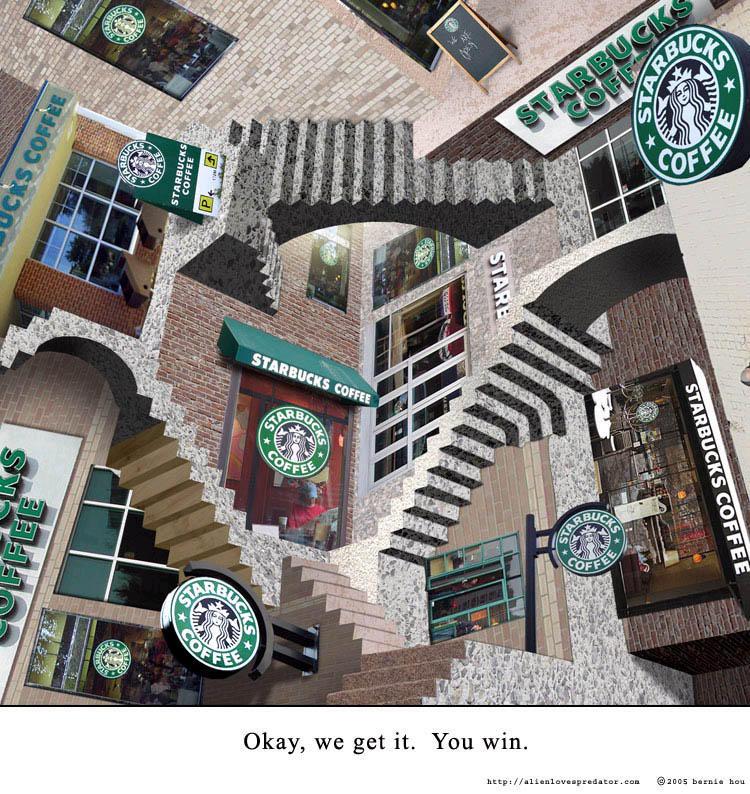
- •English for Professional Purposes: Business
- •Санкт-Петербург
- •Contents
- •Getting to know your colleagues
- •In what situations would you use the words and expressions below?
- •Farm project
- •Rain forest project
- •Peace project
- •Ben & Jerry’s Projects
- •Interpreting information
- •Reviewing background information and vocabulary
- •Introductory notes
- •Language hints for negotiation: conceding a point
- •Situation
- •2. Notice the format of the meeting.
- •3. Review your notes on Ben & Jerry’s Projects, the vocabulary, the information on business culture, and the negotiating strategy. Prepare to use this information in the meeting.
- •Verb Salad ben & jerry’s homemade, inc.
- •Part II
- •By Roger Ebert
- •Enron: The Smartest Guys in the Room (The Amazing Rise and Scandalous Fall of Enron)
- •Vocabulary
- •Enron: The Smartest Guys in the Room
- •Part III
- •Introducing the topic. Discuss these questions with another student, then with the class.
- •Main Ideas and Details
- •Vocabulary
- •Sports idioms in business
- •It's a whole new ballgame.
- •Vocabulary exercise
- •Drop, fall, fall sharply, inch down, surge in, decline, level off, plummet, plunge, rise, gain, stagnate, go nowhere, soar
- •Famous quotes from the world of business sentence stress practice
- •Discuss the meaning of the sentences
- •Now mark these yourself and say them aloud.
- •Part IV
- •Vocabulary from the Reading
- •The Star in Starbucks
- •Fielding Questions Some handy phrases for dealing with questions
- •Helpful advice Effective Visual Aids
- •Persuasive speaking for business assignment #1 topics for presentation
- •Article sources:
- •Persuasive Speaking for Business Assignment #2
- •Persuasive Speaking for Business Assignment # 3 (practicing presentation skills in a persuasive presentation, team working)
- •Ideas for Products and Services
- •IPhone competitor
- •Part V executive compensation at general electric
- •Part VI
- •Vocabulary in Context. Find a synonym for the underlined words in each of these sentences.
- •Part VII
- •Vocabulary in Context
- •Talking about brands the purest treasure
- •Reviewing background information and vocabulary
- •Glossary
- •Oxford placement test grammar test part 1
- •Grammar test Part 2
- •Now tick the correct question tag in the following 10 items:
-
Discuss the meaning of the sentences
-
The secret to managing // is to keep the guys who hate you // away from the guys who are undecided. Casey Stengel, Manager of the New York Yankees
-
The true worth of a man // is measured by the objects // he pursues.
Marcus Aurelius Antonius
3. The way to become rich // is to put all your eggs in one basket // and then watch that basket. Andrew Carnegie
Now mark these yourself and say them aloud.
-
If everyone is thinking alike, then somebody isn't thinking. General George S. Patton
-
Morale is when your hands and feet keep on working when your head says it can't be done. Benjamin Morrell
-
It is awfully important to know what is and what is not your business. Gertrude Stein
-
Motivate them, train them, care about them, and make winners out of them... they'll treat the customers right. And if customers are treated right, they'll come back.
./. Marriott, Jr.
-
Never doubt that a small group of thoughtful, committed citizens can change the world. Indeed, it is the only thing that ever has. Margaret Mead (What does "it" refer to?)
-
Wherever you see a successful business, someone once made a courageous decision. Peter F. Drucker
-
Money demands that you sell, not your weakness to men’s stupidity, but your talent to their reason. Ayn Rand
-
My experience has shown me that the people who are exceptionally good in business aren't so because of what they know but because of their insatiable need to know more. Michael Gerber
-
Capital isn’t that important in business. Experience isn’t that important. You can get both of these things. What is important is ideas. Harvey Firestone
-
In the end, all business operations can be reduced to three words: people, product and profits. Unless you’ve got a good team, you can't do much with the other two.
Lee Iacocca
-
A business that makes nothing but money is a poor kind of business. Henry Ford
-
Failure is simply the opportunity to begin again, this time more intelligently. Henry Ford
-
Those who have succeeded at anything and don’t mention luck are kidding themselves. Larry King
-
Anyone who says businessmen only deal in facts, not fiction, has never read old five-year projections. Malcolm Forbes
-
A countryman between two lawyers is like a fish between two cars. Benjamin Franklin
Part IV
S TARBUCKS:
BUILDING A NATIONAL BRAND ONE CUP AT A TIME
TARBUCKS:
BUILDING A NATIONAL BRAND ONE CUP AT A TIME
DISCUSSION
Decide whether these sentences are true or false
-
Starbucks coffee should taste the same, no matter where you buy it.
-
Employees at Starbucks, called baristas, are trained to have a passion for coffee and for serving customers.
-
Starbucks stores are primarily designed to appeal to people’s sense of smell.
-
Starbucks coffee can be sold successfully in any environment because the aroma is so strong and so appealing.
-
To build brand loyalty among customers, all Starbucks stores should look alike.
W ork
with a colleague, and then discuss your answers with the group
ork
with a colleague, and then discuss your answers with the group
a. Look at the Starbucks logo. Captain Starbuck is a sailor and adventurer in the classical American novel Moby Dick. The two-tailed siren is a strong and powerful creature in medieval adventure tales. Why do you think the college students who started Starbucks chose this logo and name?
b. Have you tried Starbucks coffee? If so, what do you think of the taste? The price? The variety? If not, why haven’t you tried it?
c. What is your impression of Starbucks stores? What image do they seek to convey? Do you spend time there, or simply pick up a drink or a bite to eat?
d. Some say that Starbucks wants to be “the McDonalds of coffee.” What do you think this phrase means? Do you think this describes the company’s goal?
READING
ROMANCING ALL THE SENSES IN THE STORE EXPERIENCE
At Starbucks, our product is not just great coffee but also what we call the “Starbucks experience”: an inviting, enriching environment in our stores that is comfortable and accessible yet also stylish and elegant.
More and more, I realize, customers are looking for a Third Place, an Inviting, stimulating, sometimes even soulful respite from the pressures of work and home. People come to Starbucks for a refreshing time-out, a break in their busy days, a personal treat. : Their visit has to be rewarding. If any detail is wrong, the brand suffers. That’s why we love the saying, “Everything matters.”
In effect, our stores are our billboards. Customers form an impression of the Starbucks brand the minute they walk in the door. The ambience we create there has as much to do with brand-building as the quality of the coffee.
Every Starbucks store is carefully designed to enhance the quality of everything the customers see, touch, hear, smell, or taste. All the sensory signals have to appeal to the same high standards. The artwork, the music, the aromas, the surfaces all have to send the same subliminal message as the flavor of the coffee: Everything is best-of-class.
What’s the first thing you notice when you approach a Starbucks store? Almost always, it’s the aroma. Even non-coffee drinkers love the smell of brewing coffee. It’s heady, rich, full-bodied, dark, suggestive. Aroma triggers memories more strongly than any of the other senses, and it obviously plays a major role in attracting people to our stores.
The sounds that fill our stores also contribute to the brand image. Until recently, our signature music has been classical or jazz instrumental, but lately Timothy Jones has started to vary the musical mood with opera, blues, reggae, even Broadway show tunes. But music is only one element of what you hear. After you place your order, you’ll usually hear the cashier call out the name of your drink, and then hear it echoed back by the barista. The hiss of the espresso machine, the clunk-clunk as the barista knocks the coffee grounds out of the filter, the bubbling of the milk steaming in a metal pitcher, and, at the bean counter, the swish of the metal scoop shoveling out a half-pound of beans, the clatter as they hit the scale – for our customers, these are all familiar, comforting sounds.
To match the warm feel of the cup in their hands, we have to pay attention to everything the customers touch: the style of the chairs, the edges of the countertops, and the texture of the slate floors. Even cleanliness is part of the store experience, and it’s one factor we monitor regularly, using “mystery shoppers” who pose as customers and rate each location on a series of criteria.
We build the romance of coffee into the visual design of every store. Many include displays of coffee beans at different stages of roasting, from the green raw beans to the cinnamon roast used for most canned coffee to the dark Starbucks roast – with an explanation of why we believe in roasting dark. Our latest store design brings the coffee beans out from their drawers and into large metal hoppers, a feature that piques people’s curiosity and gets them asking questions.
